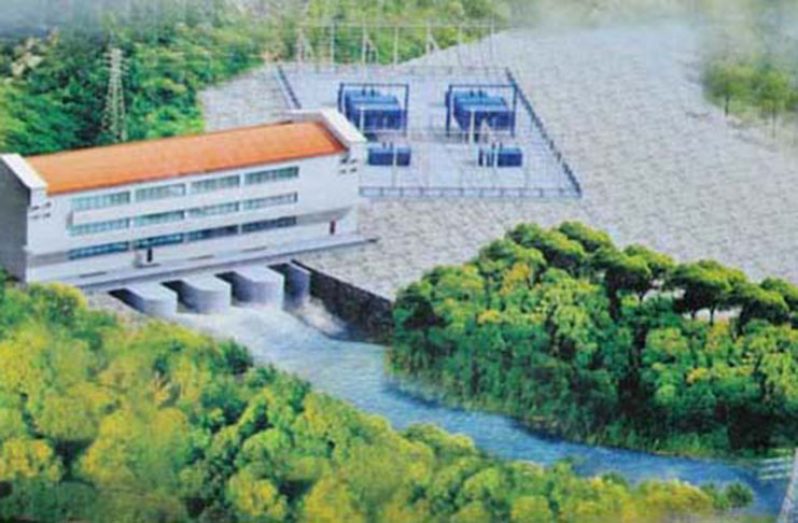THE hydropower that can be generated from the Amaila Falls project will bring enormous benefits to the manufacturing sector, including affordable and reliable energy.
This was the view of President of the Guyana Manufacturing and Services Association (GMSA) Rafeek Khan, as well as Major General (ret’d) Norman McLean, who were both guests of the National Communications Network (NCN) on Friday. They were at the time spearheading a discussion on the Amaila Falls Hydropower Project, and what it means to the manufacturing sector.
According to Khan, the renewable and reliable energy source which is provided by hydropower is needed to foster and expand the sector.
“Any company involved with manufacturing products, it doesn’t matter what you’re manufacturing; if you have a simple motor, engine, turbine, whatever it might be, energy is the key cost to production and competitiveness of that product,” Khan said.

He added: “Apart from raw material cost and labour cost, energy is your number one expense, so it is vital to the progress of manufacturing. You cannot discuss manufacturing if you do not have affordable energy.”
Khan stated that Guyana has always been at a disadvantage when it comes to obtaining affordable energy.
“Across the Caribbean and across the globe, you will see energy as always being our number one disadvantage here in Guyana. For decades and decades, we have been talking about trying to get lower energy cost. So, it is a critical component to affecting the bottom line of businesses,” Khan said.
He added that Guyana has been receiving many opportunities in terms of investments and businesses. However, these would not be fruitful, if affordable energy is not readily made available.
This, Khan said, emphasises how important renewable energy and the Amaila Falls Hydropower Project is to the manufacturing sector and Guyana as a whole.
“Opportunities are coming, and opportunities will come to Guyana, in terms of businesses, but it wouldn’t happen, and it wouldn’t materialise unless you have affordable energy,” Khan said.
He added: “Manufacturers and consumers were going to continue being a slave to our importers and the big industrialised countries that we are buying power and fuel from, and we would never be able to be a competitive country if we do not have an affordable product.”
MAJOR SETBACK
In adding his thoughts to the discussion, McLean stated that Guyana has suffered a major setback for not implementing the Amaila Falls project sooner.
“If you look at the manufacturing sector with everything that we do, it is power- generating and costing money. And, really speaking, that should have been the number one priority,” McLean said.
He said that from 2015 to now, “nothing has happened, and I really believed that we have missed the bus and we lost glorious opportunities to make a success of hydro.”
He is of the belief that Guyana is suffering from the proverbial ‘goat bite’ syndrome, since Suriname, Venezuela and Brazil started using hydroelectricity years ago.
“Goat must’ve bite us, because Suriname has ‘hydro’. They have the Afobaka; that is now 50 years old, and still running. And that would last for over 100 years. Guri Dam at Venezuela [the] same. Brazil; they have several ‘hdyros’. The only country that hasn’t got a ‘hydro’ here is Guyana,” McLean said.
He said it is disheartening that Guyana has had three failed attempts at hydropower, and is only now revisiting the Amalia Falls project.
In July of this year, it was reported that the People’s Progressive Party/Civic (PPP/C) government was going to be moving ahead with the restart the project. The government expressed its desire to begin construction of the hydropower plant by the second half of 2022, in pursuit of a 2025 completion and commissioning deadline.
According to the Request for Proposal (RFP), the government is seeking submissions on two fronts, the first of which is to Build-Own-Operate-Transfer (BOOT), which will cover the period starting from Commercial Operations Date.
In response to the country’s energy needs, the PPP/C government had conceptualised the project, which was set to produce 165 Megawatts of power.
The initiative was launched in 2009, but in 2013, it was voted down by APNU+AFC in the National Assembly, forcing its major investor, Sithe Global Incorporated to withdraw from the initiative.
In 2014, Norway, under its climate partnership with Guyana, transferred some US$80M to the Inter-American Development Bank (IDB) to fund the project.
When the PPP/C returned to office in August 2020, it expressed its recommitment to the project, and went on to propose an energy mix aimed at utilising both natural gas, heavy fuel oil, and renewables such as hydro, wind and solar.



.jpg)









